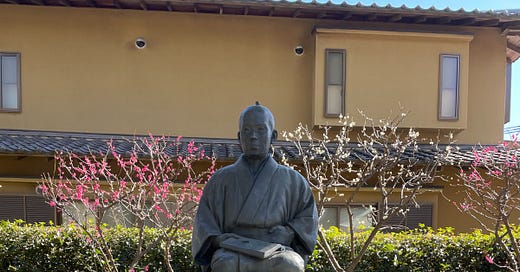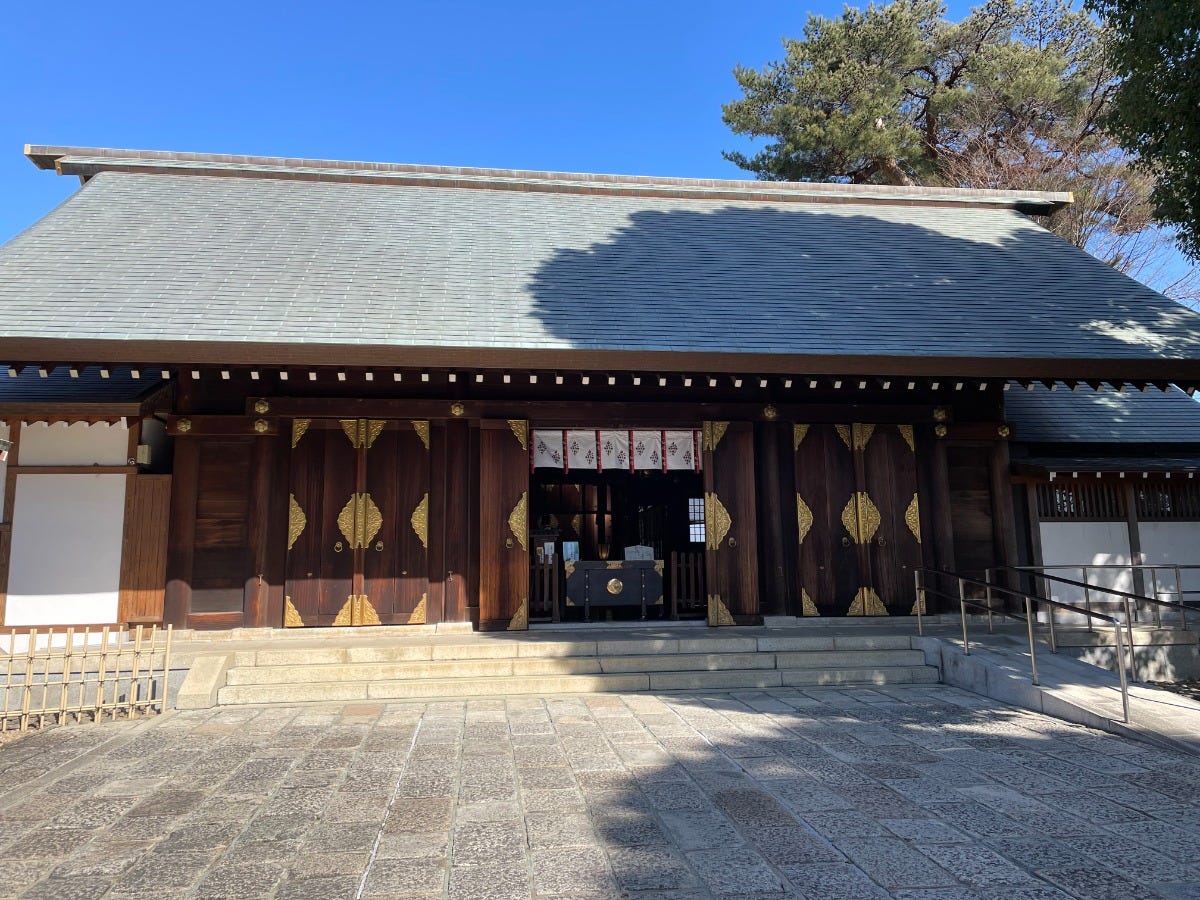Greetings dear Chroniclers,
Time for the history buffs to raise their hands! Wiggles in seat and my hand shoots up.
I hope you enjoy this quick stint into an incredible, yet volatile time in Japanese history.
Who was Yoshida Shōin?
Today, I have the pleasure of introducing you to Yoshida Shōin, a figure from the end of the Shogunate Era who appears in my book, Rise. I consider myself a student, not an expert, of the Edo and Meiji Eras. The more I read about Shōin-san, the more I became interested in him and his influence on Japanese history.
Shōin is not as famous as historic heroes like Oda Nobunaga, Tokugawa Ieyasu, or Sakamoto Ryōma. In fact, he’s kind of a controversial figure who’s known as the Father of the Meiji Restoration. (If you’re not familiar with the Meiji Restoration, it’s when the Shogunate rule ended and power was restored to the Emperor. A simple summary for a complicated, turbulent time.)
He was born to a lower-class samurai family in 1830 near Hagi in the far west of Japan. His uncle adopted him, which gave him the family name Yoshida and allowed him a higher standing in society. He loved learning and was considered a prodigy. He studied military tactics and longed to learn more about the West and its military technology. But a samurai could not travel in Japan without written permission from the daimyo, a feudal lord. On top of that, travel abroad and foreign books were banned.
Shōin was strong-willed and self-assured. In 1851, he traveled through northeastern Japan without the required permission, in an act of defiance. His daimyo stripped his samurai status and income as punishment. After that, Shōin was allowed to learn what he wished anywhere in Japan. He moved to Edo, the old name for Tokyo, in 1853. That same year, Commodore Perry arrived with a show of military might that shook the Shogunate. The next year Perry returned with more troops. Through the Kanagawa Treaty, he forced the opening of several ports and secured preference toward the U.S. in trade with Japan.
Shōin and his friend, Kaneko Shigenosuke, snuck aboard Perry’s ship and requested passage to the West so they could study. Perry, just having made the treaty, had to refuse. Being honorable men, Shōin and Kaneko turned themselves in, expecting execution. Though Perry requested leniency for them, and his men verified they were still alive.
While imprisoned in Edo, Shōin and Kaneko studied everything they could get their hands on. People brought them poetry and texts. Shōin taught anyone who would listen, including the prison guards. In 1856, they moved Shōin from prison to house arrest and he started teaching at the school on the grounds. He was a dedicated teacher and studied alongside his students—treating them as friends, rather than from a master’s position. They studied what they wanted and Shōin taught at anytime a student showed up. Often sessions would go late into the night, so Shōin and his students sometimes dozed off during day classes.
Shōin taught it was important to be the ‘Twenty-one times audacious samurai’ and that learning by itself was useless. It had to be put into action. He also felt that the Shogunate had lost its usefulness by bypassing the emperor, especially in its weak treaties with the West. He supported the idea of expelling the Western barbarians and restoring power to the emperor, in part because he feared Japan would end up a colony. With his views growing more and more radical, he became a political dissident.
In 1858 the Ansei purge began, as the Shogunate eliminated its opposition. That year, Shōin arranged an assassination for Chief Minister Ii’s messenger. It failed, and Shōin was imprisoned and sent back to Edo to be sentenced. His original punishment was exile. But Chief Minister Ii changed it to execution.
Shōin hoped his death would ignite the people. At the age of 29, he was beheaded. His death was a spark for the war that came nine years later. Anti Shogunate forces carried strips of paper with his quotes into battle.
Many of Shōin’s students became prominent figures in the Meiji government. The most well known include: Katsura Kogorō (one of the three great men who lead the restoration), Inoue Kaoru (who had a strong hand in the selection of Japan’s Meiji Era leaders and policies), Itō Hirobumi (the first Prime Minister of Japan), and Yamagata Aritomo (a high-ranking military officer who was elected as Prime Minister, twice). Shōin’s legacy lead to such a quick modernization of Japan, the West recognized it as a world power.
"To consider oneself different from ordinary men is wrong, but it is right to hope that one will not remain like ordinary men." — Yoshida Shoin
I would have liked to meet Shōin-san, but we were born in different centuries. When I return to Japan, I hope to visit the Shrine to him in Hagi (https://www.japan.travel/en/spot/684/). My husband and I had the privilege of visiting Shōin-san's shrine in Tokyo on my 2023 trip (https://livejapan.com/en/in-tokyo/in-pref-tokyo/in-jiyugaoka/spot-lj0002267/). Visiting was pretty cool, though the office was closed, so there was no stamp for my goshuincho (pilgrim's shrine and temple stamp book).
Kyota Ko-san, author of Folk Tales of Japan, Underdogs of Japanese History, and Horror Tales of Japan, has a very fun take on Shōin-san and his love for learning in this Instagram reel.
What figures in history would you like to meet? And are they from Japan or elsewhere? I'd love to know!
As I sign off, I’ll remind you to…
Be the Difference. Be extraordinary.
All the best,
Amy
Feel free to hang out with me in Substack Notes and share your thoughts.







